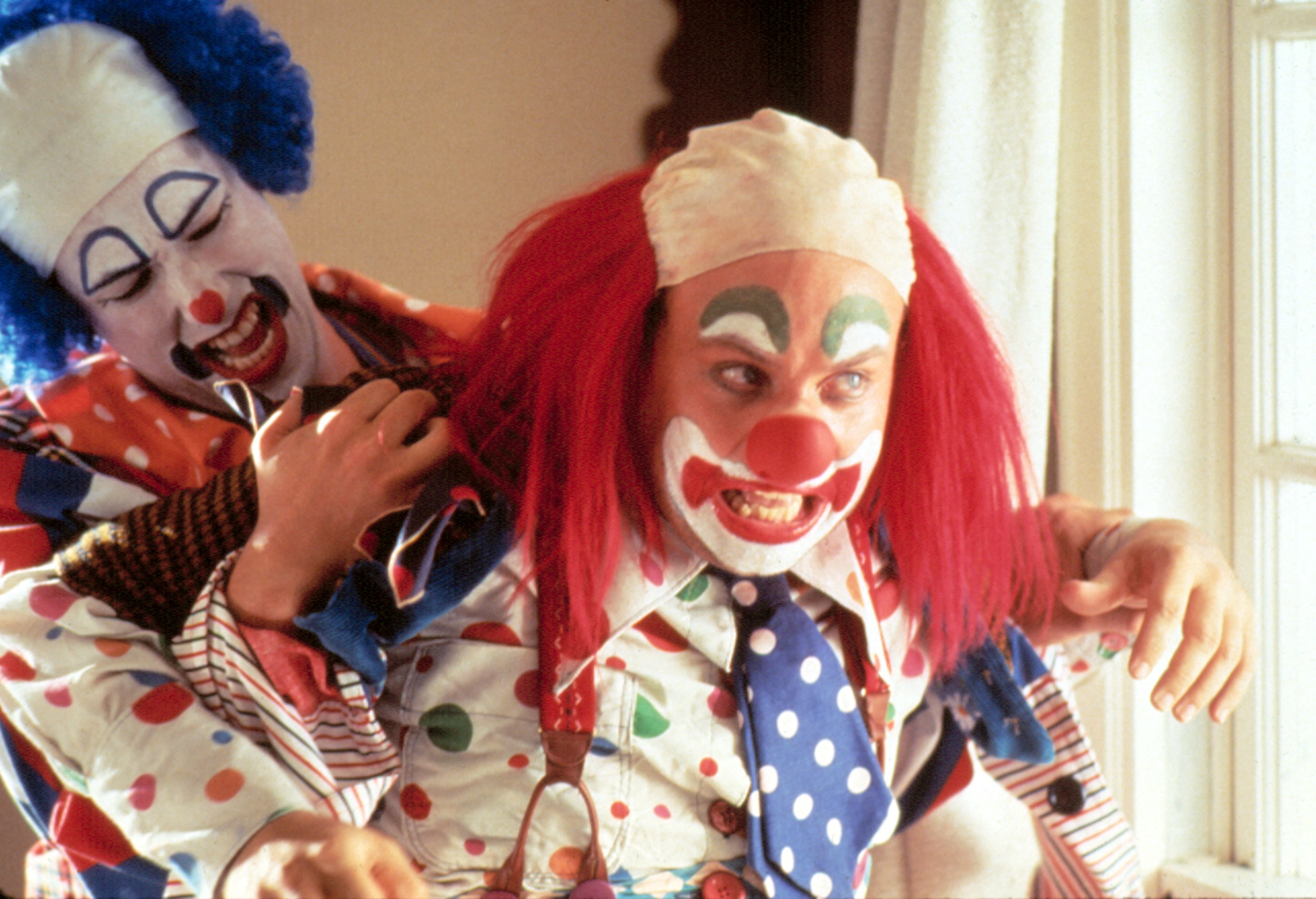The Origin and Evolution of “Shakes the Clown”

The phrase “shakes the clown” is a slang term that has gained popularity in recent years, particularly within online communities. While its exact origins are shrouded in mystery, it’s believed to have emerged from a combination of cultural influences and internet trends.
Early Usage and Origins, Shakes the clown
Tracing the earliest known uses of “shakes the clown” proves challenging due to its informal nature and widespread use in online spaces. However, some clues point to its potential origins. The phrase might have emerged from the world of online gaming, where players often use colorful language to express excitement, frustration, or disbelief. Another possibility is that it stemmed from the use of “shaking” as a gesture of disapproval or ridicule in online forums and social media platforms. The association of “clown” with someone who is foolish or out of touch might have contributed to the phrase’s humorous and derogatory connotation.
The Evolution of Meaning and Usage
The meaning and usage of “shakes the clown” have evolved over time, reflecting shifts in online culture and internet slang. Initially, the phrase was often used as a playful insult or a way to express amusement at someone’s misfortune. However, it has since taken on a more serious and even aggressive tone in certain contexts.
Contextual Variations
The meaning of “shakes the clown” can vary depending on the context and the intention of the user. In some cases, it might be used as a lighthearted expression of surprise or disbelief, while in others, it can be a harsh criticism or an attempt to shame someone. The phrase’s versatility and adaptability have contributed to its popularity and its ability to resonate with different online communities.
Cultural Impact and Interpretations: Shakes The Clown

“Shakes the Clown” has transcended its origins as a fictional character to become a memetic phenomenon, infiltrating online communities and shaping online discourse. The phrase’s versatility allows it to be applied in various contexts, leading to diverse interpretations and a lasting cultural impact.
Interpretations of “Shakes the Clown”
The phrase “Shakes the Clown” has garnered a range of interpretations, often reflecting the individual’s perspective and online context.
- Humorous and Absurd: Many individuals perceive “Shakes the Clown” as a humorous and absurd expression, often used to highlight the absurdity of situations or to express a sense of bewilderment. For example, someone might say “Shakes the Clown” in response to a particularly nonsensical event or statement.
- Existential Angst: For some, “Shakes the Clown” represents a sense of existential angst or the feeling of being lost and alone in a chaotic world. The character’s tragic and ultimately meaningless existence resonates with individuals grappling with their own struggles and uncertainties.
- Metaphor for Failure: Others see “Shakes the Clown” as a metaphor for failure, representing the struggles of an individual who tries but ultimately fails to achieve success. This interpretation is often linked to the character’s constant attempts to find happiness and fulfillment, only to be met with disappointment and misfortune.
- Critique of Society: “Shakes the Clown” can also be interpreted as a critique of societal norms and expectations. The character’s outsider status and his rejection by mainstream society can be seen as a commentary on the difficulties faced by those who don’t conform to conventional standards.
The Meme’s Cultural Impact
“Shakes the Clown” has had a significant impact on online culture, becoming a popular meme that has spread across various platforms.
- Online Communities: The phrase has found a home in online communities, particularly those focused on humor, absurdism, and internet culture. It is often used as a reaction image, a caption for memes, or as a way to express shared experiences and inside jokes.
- Social Media: “Shakes the Clown” has become a recurring theme on social media platforms like Twitter, Reddit, and Facebook. Users share memes, GIFs, and videos featuring the character, often accompanied by the phrase “Shakes the Clown” or variations thereof.
- Influence on Discourse: The phrase’s widespread use has influenced online discourse, contributing to a broader cultural conversation about humor, absurdity, and the nature of existence. It has become a shorthand for expressing complex emotions and ideas, often in a humorous and relatable way.
Applications and Creative Expressions

The phrase “shakes the clown” has transcended its initial context and found a home in various forms of creative expression. From literary works to visual arts and music, the phrase’s inherent ambiguity and evocative power have inspired artists to explore its multifaceted meanings.
Shakes the clown – While the phrase’s origins may be rooted in a specific incident or individual, its adaptability allows it to resonate with different audiences and serve as a springboard for diverse interpretations. This adaptability has led to its inclusion in various forms of art, where it has been used to convey a range of emotions, from humor to tragedy, and to explore themes of identity, societal norms, and the human condition.
Examples of “Shakes the Clown” in Creative Works
The phrase’s versatility has led to its incorporation into various creative works. Here are some examples:
- Literary Works: In a short story titled “The Clown’s Shadow,” a writer uses the phrase “shakes the clown” to symbolize the protagonist’s internal struggle with their own identity and the societal expectations placed upon them. The protagonist, a clown who feels trapped by their profession, eventually embraces their true self and breaks free from the constraints of the clown persona, leading to a cathartic moment where they “shake the clown” and embrace their authentic self.
- Visual Arts: An artist creates a series of paintings depicting clowns in various states of emotion, with the phrase “shakes the clown” serving as the title of the exhibition. Each painting explores the complex and often contradictory nature of the clown persona, ranging from playful and lighthearted to melancholic and unsettling. The phrase acts as a unifying element, drawing attention to the inherent tension between the facade and the individual behind it.
- Music: A musician incorporates the phrase “shakes the clown” into a song that explores themes of societal pressure and the struggle to conform. The lyrics depict the protagonist’s internal conflict between their desire to express their true self and the fear of being judged by others. The song’s title, “Shakes the Clown,” reflects the protagonist’s ultimate decision to reject societal expectations and embrace their individuality.
A Fictional Scenario Incorporating “Shakes the Clown”
Imagine a dystopian future where society is divided into rigid social classes, with clowns being relegated to the lowest tier. The protagonist, a talented but ostracized clown named “Patches,” yearns for a better life but feels trapped by his social standing. He encounters a mysterious figure who offers him a chance to escape his predetermined fate, but the offer comes with a chilling price: he must “shake the clown” and embrace a darker path.
The phrase “shakes the clown” takes on a profound meaning in this scenario, representing the protagonist’s struggle between his innate desire for freedom and the consequences of choosing a path that defies societal norms. The story explores the themes of social injustice, the pursuit of freedom, and the moral complexities of making choices that challenge the status quo.
Unique Perspectives on “Shakes the Clown”
The phrase’s ambiguous nature allows for various interpretations and can be used to evoke different emotions and convey specific messages.
- Humor and Lightheartedness: The phrase can be used to create a humorous effect, especially in situations where the clown persona is being challenged or subverted. For example, a comedian might use the phrase “shakes the clown” to describe a situation where they are forced to abandon their usual comedic routine and improvise.
- Tragedy and Melancholy: The phrase can also evoke a sense of tragedy and melancholy, particularly when used to describe a clown’s inner turmoil or the loss of innocence. A writer might use the phrase “shakes the clown” to portray a clown who has lost their ability to make people laugh due to personal hardship or a loss of faith in the world.
- Social Commentary: The phrase can be used to comment on societal norms and expectations, particularly those that restrict individual expression. For example, a playwright might use the phrase “shakes the clown” to depict a character who is forced to conform to societal expectations and suppress their true self.
Shakes the Clown, with his vibrant personality and comedic timing, is a beloved character in the world of entertainment. While the financial details of Shakes the Clown are not publicly known, it’s interesting to note that Kevin James, the actor who brought him to life, has amassed a significant fortune, as evidenced by his impressive kevin james net worth.
The success of Kevin James’s career, undoubtedly influenced by his portrayal of Shakes the Clown, showcases the potential for comedic characters to transcend the screen and achieve lasting recognition.
While Shakes the Clown might not seem like the most obvious connection to a heartwarming tale of self-discovery, the zookeeper movie actually offers a surprising parallel. Both narratives showcase the power of embracing one’s true self, even when faced with adversity.
Just as the zookeeper learns to find joy in unexpected places, Shakes the Clown, despite his comedic persona, reveals a depth of emotion and vulnerability that ultimately connects him with his audience.
